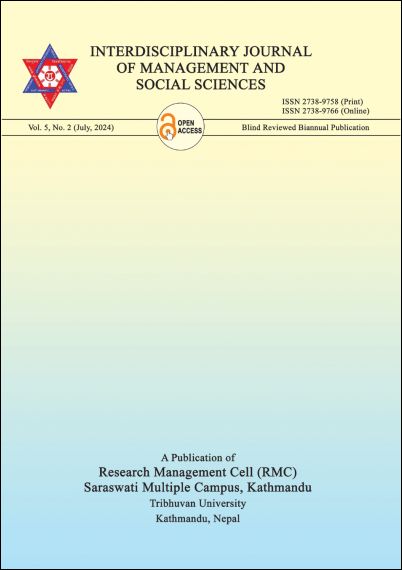The Metaphorical Representation of a Red Tomato for Bringing out Peace and Solidarity in Dhungana’s “The Eyewitness"
DOI:
https://doi.org/10.3126/ijmss.v5i2.69442Keywords:
Eyewitness, Metaphor, Middle Voice, People’s Movement, TraumaAbstract
This article analyzes Bhuvan Dhungana’s “The Eyewitnesses” by applying trauma theory propagated by Cathy Caruth and Dominick LaCapra. In this context, Caruth’s psychological approaches of trauma theory and LaCapara’s middle voice have been used as a theoretical tool to analyze the story which has been written on the pheripheri of the ten-year long Maoist insurgency that upheld the socio-economy-political lives of Nepali people. This article tries to focus on the metaphorical use of tomato as an eyewitness which observes the demonstation during the Second People’s Movement. Here, a red tomato represents the freshness and demolition of the circumstances of the conflict between the authoritarian power and need for freedom to all common denizen. The fact of destruction and demolition presented in the story is the key point to bring out the trauma of the people who either involved in the movement or remained eyewitnesses of the consequences of the historical event that was about to introduce new horizon of expectation in the life of Nepalese people.
Downloads
Downloads
Published
How to Cite
Issue
Section
License

This work is licensed under a Creative Commons Attribution-NonCommercial 4.0 International License.

